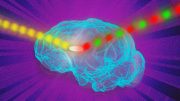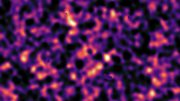
A groundbreaking study led by UCSF has provided comprehensive insights into posterior cortical atrophy (PCA), linking it strongly to Alzheimer’s disease with data from over 1,000 patients globally. This research highlights the unique challenges faced by PCA patients, including visuospatial difficulties, and stresses the importance of early detection and potential treatment options. The findings underscore the need for increased awareness and diagnostic precision to improve patient care and advance Alzheimer’s research. Credit: SciTechDaily.com
An international team led by the University of California, San Francisco, has carried out the first large-scale study on posterior cortical atrophy. This condition is characterized by a perplexing set of symptoms related to visual and spatial abilities, which are among the initial indicators of Alzheimer’s disease, manifesting in as many as 10% of Alzheimer’s cases.
The study includes data from more than 1,000 patients at 36 sites in 16 countries. It was recently published in the journal Lancet Neurology.
Posterior cortical atrophy (PCA) overwhelmingly predicts Alzheimer’s, the researchers found. Some 94% of the PCA patients had Alzheimer’s pathology and the remaining 6% had conditions like Lewy body disease and frontotemporal lobar degeneration. In contrast, other studies show that 70% of patients with memory loss have Alzheimer’s pathology.
Unlike memory issues, patients with PCA struggle with judging distances, distinguishing between moving and stationary objects, and completing tasks like writing and retrieving a dropped item despite a normal eye exam, said co-first author Marianne Chapleau, Ph.D., of the UCSF Department of Neurology, the Memory and Aging Center and the Weill Institute for Neurosciences.
Most patients with PCA have normal cognition early on, but by the time of their first diagnostic visit, an average 3.8 years after symptom onset, mild or moderate dementia was apparent with deficits identified in memory, executive function, behavior, and speech and language, according to the researchers’ findings.
At the time of diagnosis, 61% demonstrated “constructional dyspraxia,” an inability to copy or construct basic diagrams or figures; 49% had “space perception deficit,” difficulties identifying the location of something they saw; and 48% had “simultanagnosia,” an inability to visually perceive more than one object at a time. Additionally, 47% faced new challenges with basic math calculations and 43% with reading.
We need better tools and training to identify patients
“We need more awareness of PCA so that it can be flagged by clinicians,” said Chapleau. “Most patients see their optometrist when they start experiencing visual symptoms and may be referred to an ophthalmologist who may also fail to recognize PCA,” she said. “We need better tools in clinical settings to identify these patients early on and get them treatment.”
The average age of symptom onset of PCA is 59, several years younger than that of typical Alzheimer’s. This is another reason why patients with PCA are less likely to be diagnosed, Chapleau added.
Early identification of PCA may have important implications for Alzheimer’s treatment, said co-first author Renaud La Joie, Ph.D., also of the UCSF Department of Neurology and the Memory and Aging Center. In the study, levels of amyloid and tau, identified in cerebrospinal fluid and imaging, as well as autopsy data, matched those found in typical Alzheimer’s cases. As a result, patients with PCA may be candidates for anti-amyloid therapies, like lecanemab (Leqembi), approved by the U.S Food and Drug Administration in January 2023, and anti-tau therapies, currently in clinical trials, both of which are believed to be more effective in the earliest phases of the disease, he said.
“Patients with PCA have more tau pathology in the posterior parts of the brain, involved in the processing of visuospatial information, compared to those with other presentations of Alzheimer’s. This might make them better suited to anti-tau therapies,” he said.
Patients have mostly been excluded from trials, since they are “usually aimed at patients with amnestic Alzheimer’s with low scores on memory tests,” La Joie added. “However, at UCSF we are considering treatments for patients with PCA and other non-amnestic variants.”
Better understanding of PCA is “crucial for advancing both patient care and for understanding the processes that drive Alzheimer’s disease,” said senior author Gil Rabinovici, M.D., director of the UCSF Alzheimer’s Disease Research Center. “It’s critical that doctors learn to recognize the syndrome so patients can receive the correct diagnosis, counseling, and care.
“From a scientific point of view, we really need to understand why Alzheimer’s is specifically targeting visual rather than memory areas of the brain. Our study found that 60% of patients with PCA were women – better understanding of why they appear to be more susceptible is one important area of future research.”
Reference: “Demographic, clinical, biomarker, and neuropathological correlates of posterior cortical atrophy: an international cohort study and individual participant data meta-analysis” by Marianne Chapleau, Renaud La Joie, Keir Yong, Federica Agosta, Isabel Elaine Allen, Liana Apostolova, John Best, Baayla D C Boon, Sebastian Crutch, Massimo Filippi, Giorgio Giulio Fumagalli, Daniela Galimberti, Jonathan Graff-Radford, Lea T Grinberg, David J Irwin, Keith A Josephs, Mario F Mendez, Patricio Chrem Mendez, Raffaella Migliaccio, Zachary A Miller, Maxime Montembeault, Melissa E Murray, Sára Nemes, Victoria Pelak, Daniela Perani, Jeffrey Phillips, Yolande Pijnenburg, Emily Rogalski, Jonathan M Schott, William Seeley, A Campbell Sullivan, Salvatore Spina, Jeremy Tanner, Jamie Walker, Jennifer L Whitwell, David A Wolk, Rik Ossenkoppele, Gil D Rabinovici, Zeinab Abdi, Samrah Ahmed, Daniel Alcolea, Kieren S.J. Allinson, Andrea Arighi, Mircea Balasa, Frederik Barkhof, Katherine D. Brandt, Jared Brosch, James Burrell, Christopher R. Butler, Ismael Calandri, Silvia Paola Caminiti, Elisa Canu, Maria C. Carrillo, Francesca Caso, Min Chu, Nicholas Cordato, Ana Sofia Costa, Yue Cui, Bradford Dickerson, Dennis W. Dickson, Ranjan Duara, Bruno Dubois, Mark Eldaief, Martin Farlow, Chiara Feneglio, Klaus Fliessbach, Maïté Formaglio, Juan Fortea, Nick Fox, David Foxe, Caroline Froment Tilikete, Matthew P. Frosch, Douglas Galasko, Oscar Garat, Giulia Giardinieri, Neill R. Graff-Radford, Colin Groot, Ann Marie Hake, Oskar Hansson, Alison Headley, Micaela Hernandez, Daisy Hochberg, John R. Hodges, Patrick R. Hof, Janice Holton, Gabrielle Hromas, Ignacio Illán Gala, Zane Jaunmuktane, Donglai Jing, Sonja M. Kagerer, Kensaku Kasuga, Yu Kong, Enikö Kövari, Mégane Lacombe-Thibault, Alberto Lleó Plarrumaní, Diane E. Lucente, Mary M. Machulda, Giuseppe Magnani, Eloi Magnin, Maura Malpetti, Brandy Matthews, Scott McGinnis, Marsel Mesulam, Carolin Miklitz, Nidhi Mundada, Peter J. Nestor, Dilek Ocal, Ross Paterson, Olivier Piguet, Deepti Putcha, Megan Quimby, Kathrin Reetz, Netaniel Rein, Tamas Revesz, Neguine Rezaii, Federico Rodriguez-Porcel, James B. Rowe, Natalie Ryan, Raquel Sanchez-Valle, Luca Sacchi, Miguel Ángel Santos-Santos, Janet Sherman, Erik Stomrud, Pontus Tideman, Takayoshi Tokutake, Giacomo Tondo, Alexandra Touroutoglou, Babak Tousi, Rik Vandenberghe, Wiesje van der Flier, Sandra Weintraub, Bonnie Wong, Liyong Wu and Kexin Xie, February 2024, The Lancet Neurology.
DOI: 10.1016/S1474-4422(23)00414-3









Be the first to comment on "Scientists Discover New Telltale Sign of Alzheimer’s"